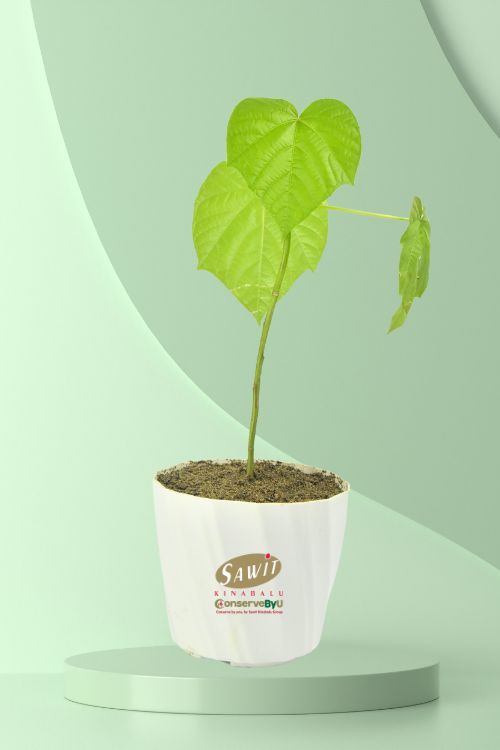| Tree Maintenance Support Duration | 1 Year, 2 Years, 3 Years, 4 Years, 5 Years |
|---|
RM30.00
Ficus benjamina, commonly known as weeping fig, benjamin fig[3] or ficus tree, and often sold in stores as just ficus, is a species of flowering plant in the family Moraceae, native to Asia and Australia.[4] It is the official tree of Bangkok. The species is also naturalized in the West Indies and in the states of Florida and Arizona in the United States.[5][6] In its native range, its small fruit are favored by some birds.[7]
Ficus benjamina is a tree reaching 30 m (98 feet) tall in natural conditions, with gracefully drooping branchlets and glossy leaves 6–13 cm (2+3⁄8–5+1⁄8 inches), oval with an acuminate tip. The bark is light gray and smooth. The bark of young branches is brownish. The widely spread, highly branching tree top often covers a diameter of 10 meters. It is a relatively small-leaved fig. The changeable leaves are simple, entire and stalked. The petiole is 1 to 2.5 cm (3⁄8 to 1 inch) long. The young foliage is light green and slightly wavy, the older leaves are green and smooth; the leaf blade is ovate to ovate-lanceolate with wedge-shaped to broadly rounded base and ends with a short dropper tip. The pale glossy to dull leaf blade is 5 to 12 cm (2 to 4+1⁄2 inches) cm long and 2 to 6 cm (1 to 2+1⁄2 inches) wide. Near the leaf margins are yellow crystal cells (“cystolites”). The two membranous, deciduous stipules are not fused, lanceolate and 6 to 12 mm (1⁄4 to 1⁄2 inch) (rarely to 15 mm or 9⁄16 inch) long.[8]
F. benjamina is monoecious. The inflorescences are spherical to egg-shaped, shiny green, and have a diameter of 1.5 cm (1⁄2 inch). In the inflorescences are three types of flowers: male and fertile and sterile female flowers. The scattered, inflorescences, stalked, male flowers have free sepals and a stamen. Many fertile female flowers are sessile and have three or four sepals and an egg-shaped ovary. The more or less lateral style ends in an enlarged scar.[citation needed]
The ripe figs (collective fruit) are orange-red and have a diameter of 2.0 to 2.5 cm (3⁄4 to 1 inch).
How Does It Work

01.
Select tree and make payment.

02.
CBU prepare for tree planting.

03.
Tree is being planted.

04.
Certificate is prepared.

05.
Confirmation email will be delivered.
An automated email is sent out upon the purchase of trees to confirm your order. After the trees have been planted (in 4 weeks or less), an email containing the following will be sent out :
- One e-certificate
- One photograph per unit & GPS coordinates of the plot where the tree was planted on
- One year maintenance care for your planted tree







